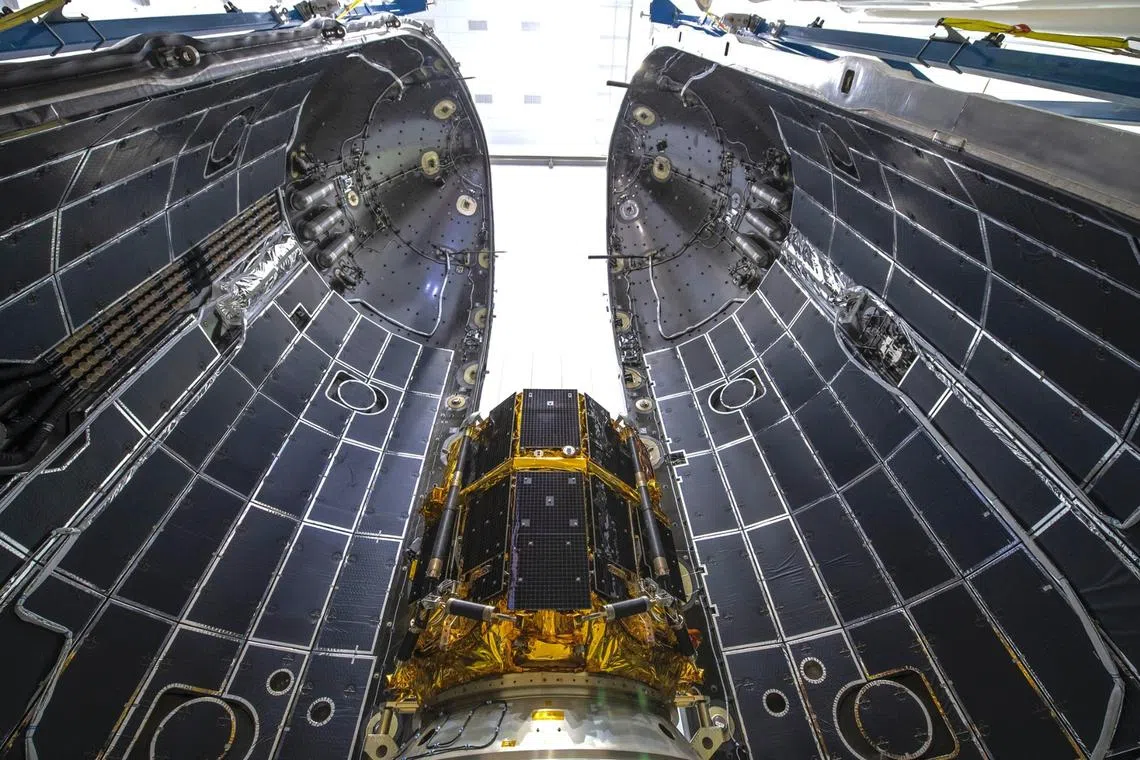Japan's ispace launches first commercial Moon lander
Sign up now: Get insights on Asia's fast-moving developments

The M1 lunar lander, made by the Japanese company ispace, being integrated into SpaceX Falcon 9 rocket fairing.
PHOTO: ISPACE/FACEBOOK
Follow topic:
TOKYO - A Japanese start-up’s spacecraft was launched to the Moon on Sunday in the country’s first lunar mission and the first of its kind by a private company.
The launch was carried out by Mr Elon Musk’s SpaceX at Cape Canaveral in the US state of Florida after two postponements for additional pre-flight checks.
The spacecraft, produced by Tokyo-based start-up ispace, blasted off aboard a Falcon 9 rocket at 2.38am (3.38pm Singapore time), live footage of the launch showed.
“Our first mission will lay the groundwork for unleashing the Moon’s potential and transforming it into a robust and vibrant economic system,” ispace chief executive Takeshi Hakamada said in a statement.
Only the national space agencies of the US, Russia and China have achieved soft landings on Earth’s nearest neighbour in the past half century.
Israeli organisation SpaceIL failed in April 2019 to become the first privately funded mission to land on the Moon, after its lander crashed into the surface while attempting to land.
Mission success would also be a milestone in space cooperation between Japan and the United States at a time when China is becoming increasingly competitive and rides on Russian rockets are no longer available in the wake of Moscow’s invasion of Ukraine.
It would also cap a space-filled few days for Japan, after billionaire Yusaku Maezawa on Friday revealed the eight crew members he hopes to take on a SpaceX Moon flyby as soon as next year.
The ispace mission is the first of a programme called Hakuto-R, which means “white rabbit” in Japanese. The company said its lunar lander was expected to touch down on the visible side of the Moon in April 2023 – the Year of the Rabbit in Asia.
Measuring just over 2m by 2.5m, the spacecraft has a payload that includes a 10kg rover built by the United Arab Emirates. The Gulf country is a newcomer to the space race but sent a probe into Mars’ orbit last year. If the rover, named Rashid, successfully lands, it will be the Arab world’s first Moon mission.
Hakuto was one of five finalists in Google’s Lunar XPrize competition to land a rover on the Moon before a 2018 deadline, which ended without a winner.
The ispace lunar lander is also carrying two robots produced by Japan’s space agency and a disc with the song Sorato by Japanese rock band Sakanaction, which was originally written in support of the Google competition.
The firm hopes this will be the first of many deliveries of government and commercial payloads.
The ispace craft aims to put a small National Aeronautics and Space Administration (Nasa) satellite into lunar orbit to search for water deposits before touching down in the Atlas Crater.
Privately funded ispace, which has just 200 employees, has a contract with Nasa to ferry payloads to the moon from 2025 and is aiming to build a permanently staffed lunar colony by 2040.
ispace has said it “aims to extend the sphere of human life into space and create a sustainable world by providing high-frequency, low-cost transportation services to the Moon”. AFP, REUTERS

